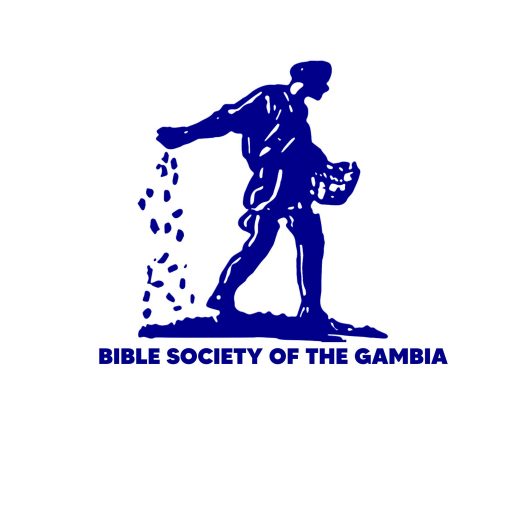Esther Becomes Queen
1 Later, even after the king's anger had cooled down, he kept thinking about what Vashti had done and about his proclamation against her. 2 So some of the king's advisers who were close to him suggested, “Why don't you make a search to find some beautiful young virgins? 3 You can appoint officials in every province of the empire and have them bring all these beautiful young women to your harem here in Susa, the capital city. Put them in the care of Hegai, the eunuch who is in charge of your women, and let them be given a beauty treatment. 4 Then take the young woman you like best and make her queen in Vashti's place.”
The king thought this was good advice, so he followed it.
5 There in Susa lived a Jew named Mordecai son of Jair; he was from the tribe of Benjamin and was a descendant of Kish and Shimei. 6 When King Nebuchadnezzar of Babylon took King Jehoiachin of Judah into exile from Jerusalem, along with a group of captives, Mordecai was among them. 7 He had a cousin, Esther, whose Hebrew name was Hadassah; she was a beautiful young woman, and had a good figure. At the death of her parents, Mordecai had adopted her and brought her up as his own daughter.
8 When the king had issued his new proclamation and many young women were being brought to Susa, Esther was among them. She too was put in the royal palace in the care of Hegai, who had charge of the harem. 9 Hegai liked Esther, and she won his favor. He lost no time in beginning her beauty treatment of massage and special diet. He gave her the best place in the harem and assigned seven young women specially chosen from the royal palace to serve her.
10 Now, on the advice of Mordecai, Esther had kept it secret that she was Jewish. 11 Every day Mordecai would walk back and forth in front of the courtyard of the harem, in order to find out how she was getting along and what was going to happen to her.
12 The regular beauty treatment for the women lasted a year—massages with oil of myrrh for six months and with oil of balsam for six more. After that, each woman would be taken in turn to King Xerxes. 13 When she went from the harem to the palace, she could wear whatever she wanted. 14 She would go there in the evening, and the next morning she would be taken to another harem and put in the care of Shaashgaz, the eunuch in charge of the king's concubines. She would not go to the king again unless he liked her enough to ask for her by name.
15 The time came for Esther to go to the king. Esther—the daughter of Abihail and the cousin of Mordecai, who had adopted her as his daughter; Esther—admired by everyone who saw her. When her turn came, she wore just what Hegai, the eunuch in charge of the harem, advised her to wear. 16 So in Xerxes' seventh year as king, in the tenth month, the month of Tebeth, Esther was brought to King Xerxes in the royal palace. 17 The king liked her more than any of the other women, and more than any of the others she won his favor and affection. He placed the royal crown on her head and made her queen in place of Vashti. 18 Then the king gave a great banquet in Esther's honor and invited all his officials and administrators. He proclaimed a holiday for the whole empire and distributed gifts worthy of a king.
Mordecai Saves the King's Life
19 Meanwhile Mordecai had been appointed by the king to an administrative position. 20 As for Esther, she had still not let it be known that she was Jewish. Mordecai had told her not to tell anyone, and she obeyed him in this, just as she had obeyed him when she was a little girl under his care.
21 During the time that Mordecai held office in the palace, Bigthana and Teresh, two of the palace eunuchs who guarded the entrance to the king's rooms, became hostile to King Xerxes and plotted to assassinate him. 22 Mordecai learned about it and told Queen Esther, who then told the king what Mordecai had found out. 23 There was an investigation, and it was discovered that the report was true, so both men were hanged on the gallows. The king ordered an account of this to be written down in the official records of the empire.
Mansa Ahasuweru ye i miira Wasiti la
1 Kabiriŋ mansa jusoo sumayaata, a ka tu i miira la Wasiti la le aniŋ a ye meŋ ke a la, aniŋ ate fanaa ye meŋ kankulaa ka a ke luwaa ti Wasiti la kuwo to. 2 Bituŋ mansa la fondinkewolu mennu ka a maakoyi, naata a fo ko, “Sunkutu ñiimaa le ñanta ñini la ite mansa ye. 3 Ite si kumandaŋolu tomboŋ i la bankoolu bee kaŋ, ka ñiŋ sunkutu ñiimaalu samba naŋ i la musubuŋo kono Susa tatoo kono. I la dookuulaa Hekayi meŋ marata ite la musoolu ma si ì topatoo. Ì si ì muu tuloolu la, fo ì baloo bee ye ñiiñaa. 4 Bituŋ musoo meŋ ye ite mansa ñaa faa, i si wo tomboŋ, wo si ke mansamusoo* ti Wasiti noo to.” Mansa Ahasuweru naata soŋ ñiŋ feeroo la, aduŋ a ye wo le ke.
Moridekayi niŋ Esita
5 Yahuudoo doo le tarata nuŋ Susa tatoo kono, a too mu Moridekayi le ti. A bota Benjamini lasiloo le kono. A keta Yayiri dinkewo le ti, Yayiri Simeyi dinkewo, Simeyi Kisi dinkewo. 6 Moridekayi tarata nuŋ moolu le kono, Mansa Nebukanesa ye mennu niŋ Yehoyahini Yahuuda mansa diyaakuyaa samba, ka bo Yerusalaamu saatewo kono ka taa a la bankoo kaŋ. 7 Moridekayi ye sanawu sunkutoo le soto meŋ too mu Hadasa ti, saayiŋ ì ka a fo a ye le ko Esita. A ñiiñaata baake le, aduŋ a looñaa fanaa benta le. A la wuluulaalu faata le kabiriŋ a dindiŋ. Bituŋ Moridekayi le ye a kuluu, a ye a ke ko a faŋo diŋo.
Esita keta mansamusoo ti
8 Kabiriŋ mansa ye ñiŋ kankulaaroo ke, ì ye sunkutu jamaa le samba Susa tatoo kono, Esita tarata ì kono le. Ì ye a niŋ sunkutoolu bee samba mansa la musubuŋo le kono Hekayi yaa, meŋ be marariŋ musubuŋo bee la. 9 Esita la kuwo diyaata Hekayi ye le, aduŋ a tariyaata ka bala ñiiñandiraŋolu dii a la aniŋ a fansuŋ domori kendoo. Hekayi ye dookuulaa sunkutu woorowula le tomboŋ, ka bo mansa la buŋo to mennu ñanta Esita maakoyi la. A ye ì niŋ Esita samba dulaa to, meŋ beteyaata mansa la musubuŋo bee kono. 10 Esita maŋ soŋ a la bankudiŋyaa yitandi la, aniŋ a la moolu mu meŋ ti, kaatu Moridekayi maŋ soŋ a ye a fo. 11 Luŋ-wo-luŋ Moridekayi si taamaŋ-taamaŋ mansa la musubuŋo luwo to, ka a juubee Esita be ñaameŋ aniŋ meŋ be ke la a la. 12 Janniŋ sunkutoolu la siŋo be sii la ka taa Mansa Ahasuweru yaa, sunkutu-wo-sunkutu ñanta kari taŋ niŋ fula le taa la, ì ka a baloo muu tulu seeralaalu la mennu dadaata musoolu ye. Kari wooro ì ka a baloo muu niŋ miiri* tuloo la, kari wooro koteŋo ì ka a baloo muu niŋ tulu seeralaa siifaa doolu la, mennu ñanta a baloo bee ñiiñandi la. 13 Niŋ a bota musubuŋo kono ka taa mansa la buŋo to, feŋ-wo-feŋ diyaata a ye a be wo le taa la. 14 Wulaaroo a si taa jee, bituŋ soomandaa a si muruŋ musubuŋo kara doo la. A te muruŋ na mansa yaa, fo niŋ mansa lafita a la, a si a kumandi a too la. Mansa la dookuulaa Saasikasi le marata mansa la kaŋ foroyandi musoolu* ma, aduŋ ate le ka ì topatoo.
15 Saayiŋ Esita la siŋo siita ka taa mansa yaa. Esita le mu Abihayili diŋo ti, aduŋ a keta Moridekayi sanawu le ti, meŋ ye a kuluu ko a faŋo diŋo. Kabiriŋ a taata mansa yaa, Hekayi ye a yaamari feŋ-wo-feŋ na ka a taa, a ye wo le taa. Moo-wo-moo ye a je, wo ka a la ñiiñaa le fo. 16 Ì ye a samba Mansa Ahasuweru la buŋo to saŋo kari tanjaŋo le kono, ì ka a fo meŋ ye Tebeti, meŋ keta Mansa Ahasuweru la mansayaa sanji woorowulanjaŋo ti. 17 Mansa naata ate le kanu ka tambi wo sunkutoolu bee la, aduŋ a la kuwo diyaata a ye. Bituŋ a ye mansanaafoo ke Esita kuŋo to, a ye a ke mansamusoo ti Wasiti noo to.
18 Bituŋ mansa naata bidaŋ baa kumandi Esita horomoo kamma la, a ye a la moo kummaalu aniŋ a la maralilaalu bee kumandi. A ye foñondiŋ luŋo kankulaa a la bankoolu bee kaŋ, a ye soorifeŋolu dii mansa jarita ka mennu dii.
Moridekayi ye mansa niyo kanandi
19 Kabiriŋ sunkutoolu benta siiñaa fulanjaŋo la, Moridekayi tarata mansa la koridaa daa le to. 20 Bari Esita ye a la bankudiŋyaa maabo le, aniŋ a la moolu la kuwo, ko Moridekayi ye a fo a ye ñaameŋ. A tententa le ka Moridekayi la yaamaroo muta, ko a ye a ke nuŋ ñaameŋ, kabiriŋ a dindiŋ. 21 Kabiriŋ Moridekayi be siiriŋ mansa la koridaa daa to, mansa la dookuulaa fuloo Bikitana niŋ Teresi mennu ka a la koridaa daa kanta, kamfaata baake, aduŋ ì lafita ka Mansa Ahasuweru faa. 22 Bari Moridekayi ye ì la ñiŋ feeroo kalamuta le, bituŋ a ye a fo Esita ye, wo fanaa ye a sindi mansa la niŋ Moridekayi too la. 23 Kabiriŋ ì ye ñiŋ kuwo kisikisi a keta tooñaa ti, ì ye ñiŋ kee fuloo deŋ moo dendulaa le to. Ñiŋ kuwo bee safeeta bankoo taarika kitaaboo kono le mansa ñaa la.

